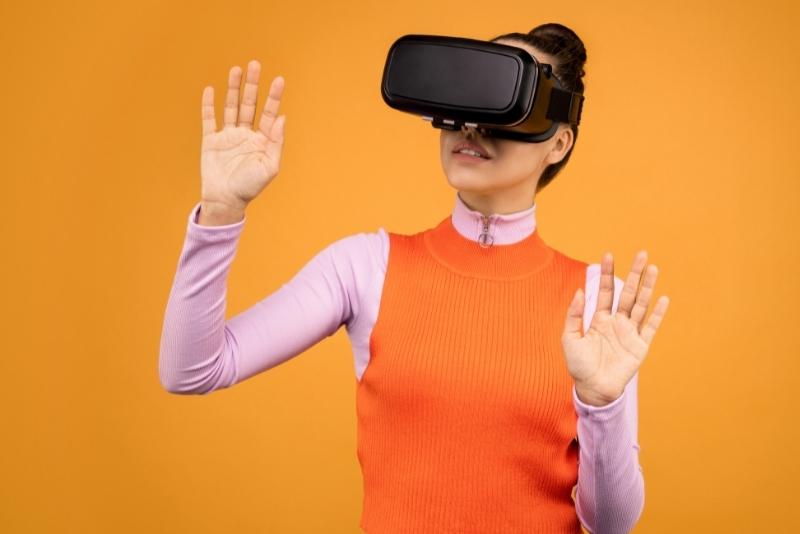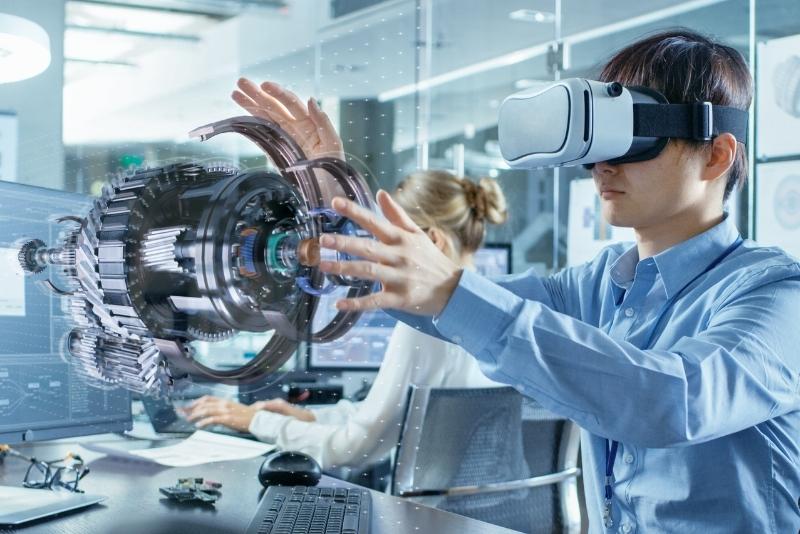The differences between Augmented Reality (AR), Virtual Reality (VR), and Mixed Reality (MR) terms are getting more and more attention each day.
They are technologies that integrate virtual and real-world components. And today, these technologies have a significant impact on human-computer connection. This comes because they combine the real and the virtual world in various ways. Additionally, giving us new means of experiencing both. The new demands of society with the investments make these three types of realities a component desired for daily lives. Yet people are still mixing the terms AR, VR, and MR.

WHAT IS AUGMENTED REALITY (AR) ?
Augmented Reality (AR) is a computer-based technology that combines the digital world with the real world. It works on the computer vision of real-world surfaces. Objects detection is possible by systems like object recognition, plane detection, facial recognition, movement tracking, and more. Then it overlaps computer-generated data such as graphics, sounds, images, and texts accordingly on these planes detected before. By doing so, AR enhances the interaction between digital items while letting us see our real-world surroundings.
About ten years ago, AR was an advanced technology finding usage only in a few areas like gaming and navigation apps. Today find applications from the biggest tech companies to the smallest businesses. Also, it finds usage in various fields, including aviation, medicine, manufacturing, and automotive. Besides, thanks to mobile devices’ developments, it finds ap also in our daily life. Everybody can use AR easily through their smartphone screens and cameras. Therefore it is getting as attractive and known as Virtual Reality.

WHAT IS VIRTUAL REALITY (VR) ?
Virtual Reality (VR) is a technology that uses software and headset devices to replace one’s view from the real world to a digitally created scene. Using full-coverage headsets completely blocks out your surroundings and shuts out the physical world while using. With the LCD or OLED panels inside the lenses of these headset devices, a computer-generated virtual environment is reflected, and your worldview is replaced. Usually, the devices connect to a PC, console, or smartphone that provides virtual visions. These visions can be replicas of a real-world place or a place from an entirely imaginary world.
VR enables people to have a fully immersive experience in these virtual places. It tricks your senses by allowing you only to see what the lenses are reflecting your eyes. Also, with realistic sounds, 360-degree visuals, and motion capture gears, it can simulate your actions. Also, allow interactive encounters with the virtual items and make you feel like you are actually in that simulated place.
VR is the most popular of all these three technologies. Mostly because it goes way back from both the other two, and it is already very popular that finds usage by lots of industries. Gaming and entertainment companies were VR’s early adapters like it is for AR. And likewise, finds usage in many other fields such as architecture and construction, travel, real estate and more.

WHAT IS MIXED REALITY (MR) ?
Mixed Reality (MR), as its name implies, is a combination of AR and VR. It is also specified as Hybrid Reality as it blends real-world and digital elements. While it is mainly a technology used for mixing the physical and virtual world, the best side of MR is the realistic interaction between the users and the digital objects.
Digital devices should be used while handling MR to have a fully immersive experience. Microsoft’s HoloLens is a trendy example of these devices. Through these translucent MR devices and gestures, gaze, or voice recognition technologies, users can react from digital objects to their actions. They can interact with both the physical and virtual environment at the same time. Instead of relying only on remote control devices, smart glasses, or smartphones, users can also use their gestures, glancing or blinking, and much more. These interactions and the realistic renderings make the experience of MR more convincing as if it is in real life. It is the newest immersive technology from these three reality types, and maybe the least used one; however, it has a huge potential of integrating into our daily life as an essential tool.
THE DIFFERENCE BETWEEN AR, VR, AND MR
While they are all compelling technologies with the same main aim to connect the virtual world and humans, they all have distinguishing characteristics. The fundamental difference is that VR users have an entirely virtual experience. MR users can interact with these added virtual elements during their real-world experiences.
Another difference is that in VR, and in the last decade, AR is much more accessible for single users, and we see more adaptations every day, yet MR still finds usage by big companies. Most VR and AR applications can run on mobile devices, but MR requires more processing power.
VR experiences are getting more realistic with the developments and studies on computer-aided design. Still, virtual experiences are not very convincing yet. At the same time, AR offers a more realistic experience since it never detaches users from the real world, and MR experiences are the most realistic. There is deeper integration between humans and computers with MR since they can respond to each other’s actions.
CONCLUSION
With all their similarities and differences, they are all promising technologies that will soon take human-computer interaction on another level. Whether they combine their powers or solely thrive in their range, it is inevitable to adopt them firstly in our work environments and also our daily lives.



